How to choose a diamond necklace or pendant?
In order to get the highest quality, all our pendants are custom-made in our jewelry workshop, on demand. We will make your pendant according to the dimensions of the diamond; this is how we get the most beautiful necklaces.
We are diamantaires and we know how important choosing the right diamond is to get a beautiful piece of jewelry. We pick with the utmost care diamonds that are 100% ethically-sourced and that will enhance our pendants.
Our pendants can be set with round brilliant cut diamonds, as well as any other diamond shape (princess cut, oval cut, heart cut, pear cut, etc.) They will be set with GIA, HRD or IGI certified diamonds. These acronyms stand for the best gemological laboratories.
There is no weight limit for the diamonds we can set on our pendants; they can weigh 0.1 carat, 0.5 carat, 1 carat, 2 carats, or more.
What metals or alloys do we recommend for a diamond pendant?
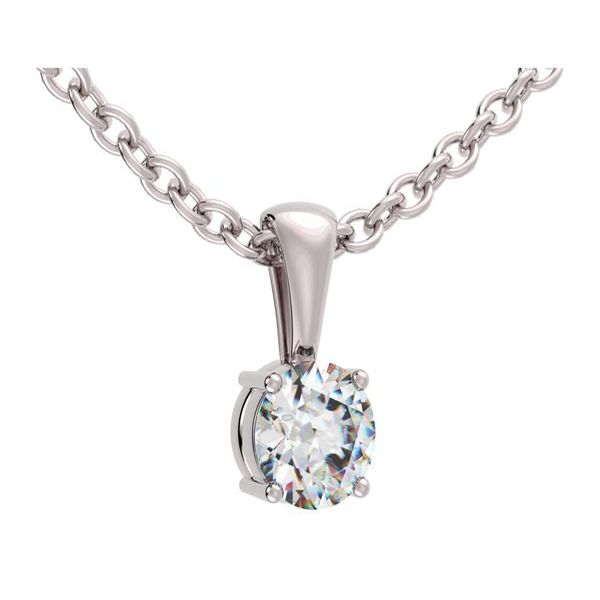
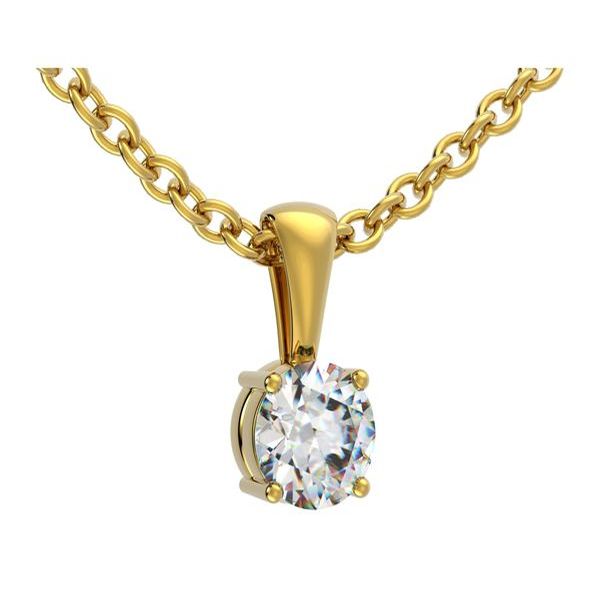

Choosing a metal over another is first of all a matter of taste. However, we advise you to choose a metal according to the metal of the jewelry you already wear. If your jewelry is made with white gold, then you should probably choose a white gold pendant.
We use 14K gold, 18K gold, and platinum for jewelry making. We do not sell silver jewelry.
If you wish to buy a pendant cheap, we advise you to choose white gold or yellow gold; these are the best-selling metals. On the other hand, a platinum pendant will be more expensive than a gold one.
It takes longer to make a pendant with platinum or rose gold, typically a week more than with white gold and yellow gold pendants.
What types of necklaces do we recommend?

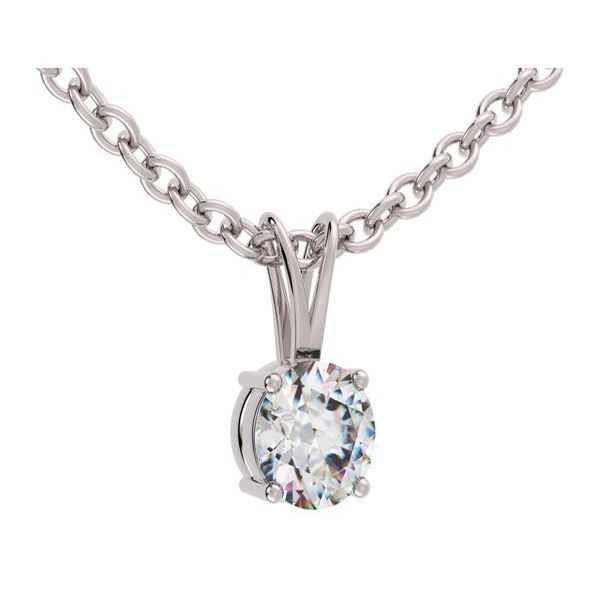
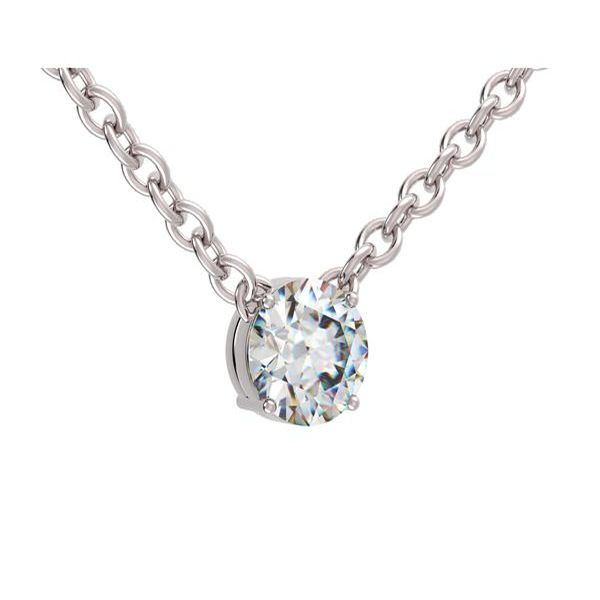
We sell bail, V-bail, and chain-soldered pendants.
The advantage of bail and V-bail pendants is that you can add any chain of your choosing. Conversely, changing the chain of a soldered-chain pendant will not be easy without unsoldering it and soldering another one instead.
If you already have a gold or platinum chain, we advise you to buy a bail (or V-bail) pendant. It will cost you less than a chain-soldered design, as the latter requires you to pay for a new gold or platinum chain.
What kinds of settings do we recommend for a pendant?
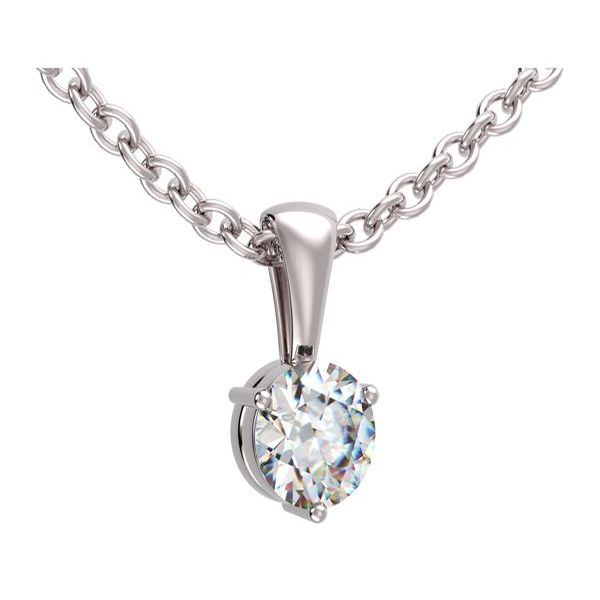

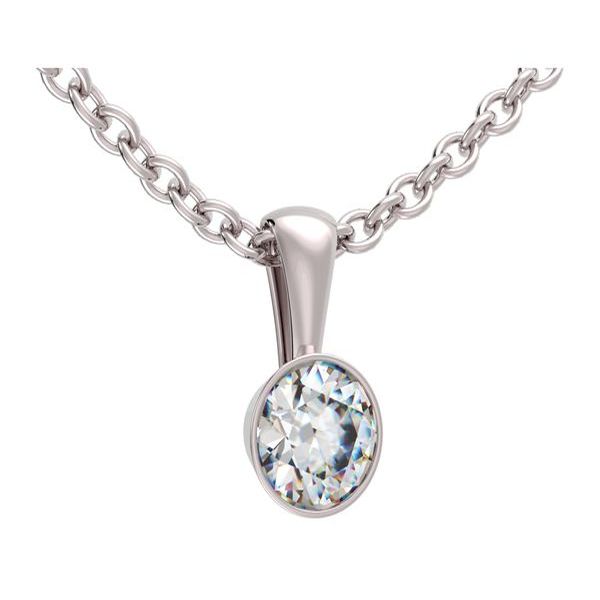
We sell pendants with 3 prong settings, 4 prong settings, 6 prong settings, and bezel settings.
The top-selling pendants are those that have 4 or 6 prongs; they are a very good choice, as they allow for the diamond to be maintained properly. The prongs of a 6 prong setting are smaller than those of a 4 prong setting, meaning that they are more discreet.
3 prong pendants are not recommended for diamonds that weigh more than 0.5 carat because the diamond could fall off if a prong were to twist. Since the prongs of a 3 prong setting are less numerous than on a 4 prong or 6 prong settings, they will be more visible.
A bezel-set pendant is a good choice as it allows for the diamond to be set along its diameter, therefore protecting it better. However, this setting traps the diamond around the metal, and it will be more difficult for life to penetrate the diamond. This could slightly dim the diamond fire.
What types of chains do we offer with our pendants or necklaces?
Our bail and V-bail designs are sold without chains. You can of course add one to your order if you want.
The gold and platinum chains that are used for our necklaces are 40cm long, and they come with spring ring clasps.
How to make a necklace based on the design you have chosen?
Our jewelry workshop is at your disposal for making your dream pendant or necklace. You only need to send us a photo or a drawing of the design you want via email, and we will send you a price estimate as soon as possible.
All our pieces of jewelry come in a beautiful jewelry box, ready to be gifted!
A pendant is always a very appreciated gift. It can be given for a birthday, a wedding, or a birth.
White gold pendants
White gold necklaces are very popular. Rhodium-plated white gold is a very good choice for this type of jewelry as it can be dipped in rhodium from time to time, depending on its condition. This will give back the pendant all its brilliance, as if it were new!
We use for our white gold pendants 18K gold, which is made up of 75% gold and 25% other metals, and 14K gold, which is made up of 58.3% gold and 41.7% other metals.
A white gold design will look almost identical to a platinum design, in addition to being cheaper than the latter. If it is true that white gold is more malleable than platinum, it is harder to damage a pendant than a ring. In the long run, white gold pendants will be less fragile than other pieces of jewelry (rings, solitaires, eternity rings, etc.)
Yellow gold pendant
Yellow gold pendants are also very popular, with many of our customers choosing this alloy. This is because gold has been used since Antiquity; it is a noble and almost unalterable metal.
We sell white gold pendants made with 18K gold, which is made up of 75% gold and 25% other metals, and 14K gold, which is made up of 58.3% gold and 41.7% other metals.
If it is true that yellow gold is more malleable than platinum, it is harder to damage a yellow gold pendant than a yellow gold ring. A yellow gold pendant is therefore a good choice because it will be less fragile than other pieces of jewelry (rings, solitaires, eternity rings, etc.) in the long run.
Rose gold pendant
Rose gold pendants are less popular because this type of alloy is used less frequently in the jewelry industry, and it is also less known by the general public. However, we have had more and more clients over the past few years that chose rose gold because they already owned rose gold earrings or eternity rings. It will look better if you stick to the same metal for all your pieces of jewelry.
To make our rose gold pendants, we use 18K gold, which is made up of 75% gold and 25% other metals, and 14K gold, which is made up of 58.3% gold and 41.7% other metals.
Platinum pendant
Platinum pendants are very popular; this is because this type of alloy is very noble and resistant. We have had more and more clients over the past few years choosing a platinum design.
We only sell pendants whose platinum is made up of 95% platinum and 5% iridium. Platinum has been used in the jewelry industry for many decades.
Many of our customers choose a platinum necklace because it is sturdy and sparkling. Platinum shines a little bit brighter than white gold. While it is true that it is less prone to chipping than gold and needs less maintenance, platinum is also more expensive than gold (because it is 60% denser than gold.) In the jewelry industry, platinum is more difficult to work with than other alloys.
We have had many customers who bought from us a platinum solitaire, and who - for a birthday or an anniversary - decide to treat themselves to a platinum necklace set with a beautiful round brilliant cut diamond.
